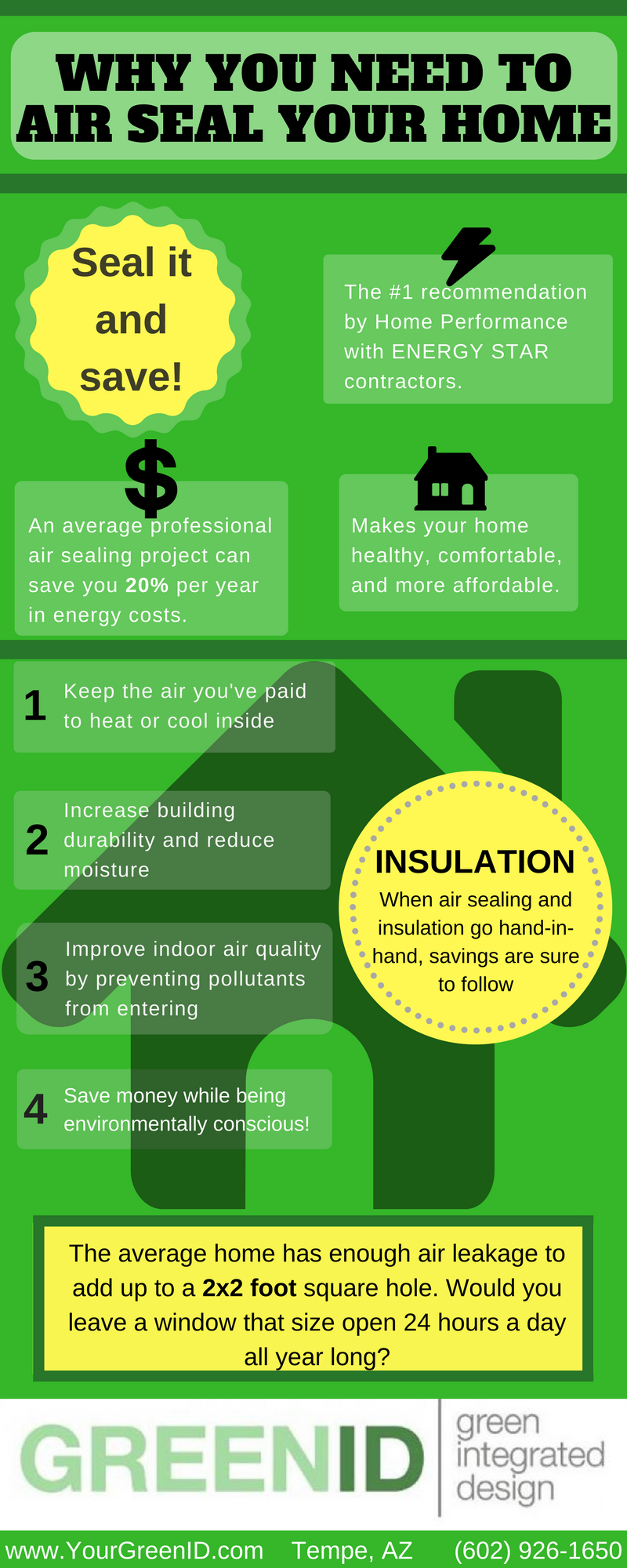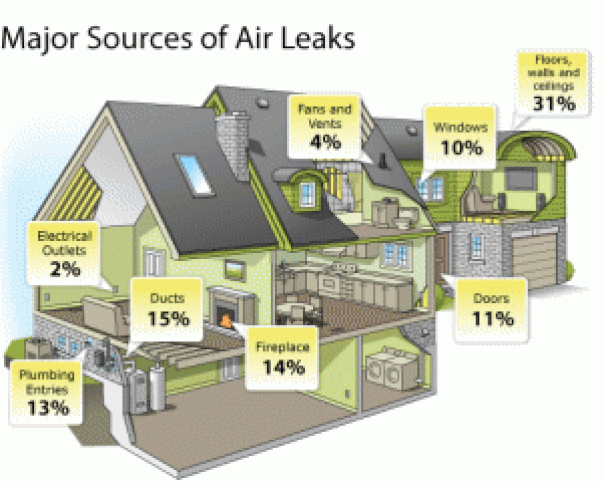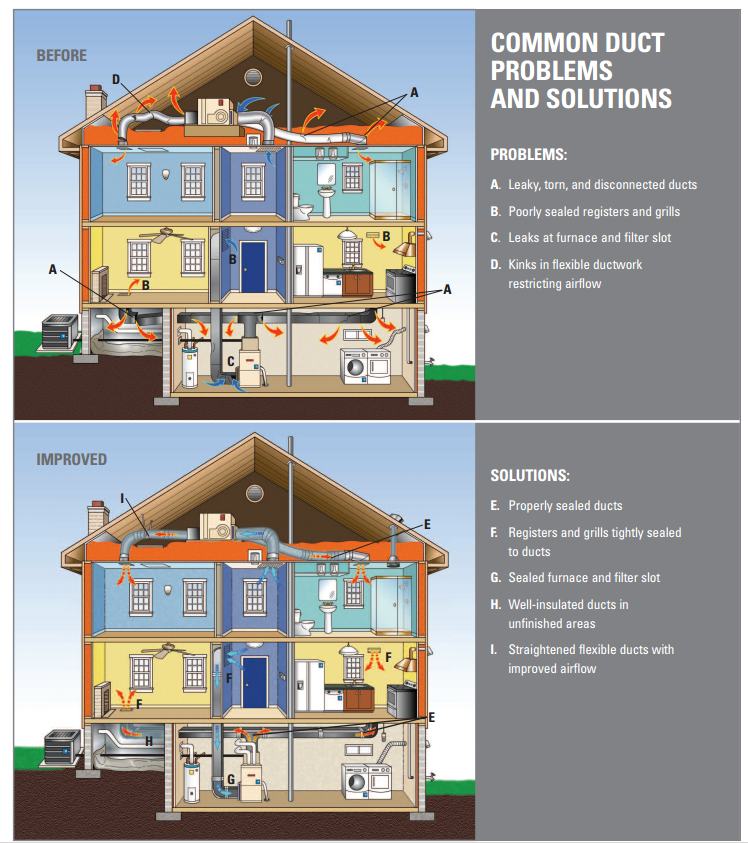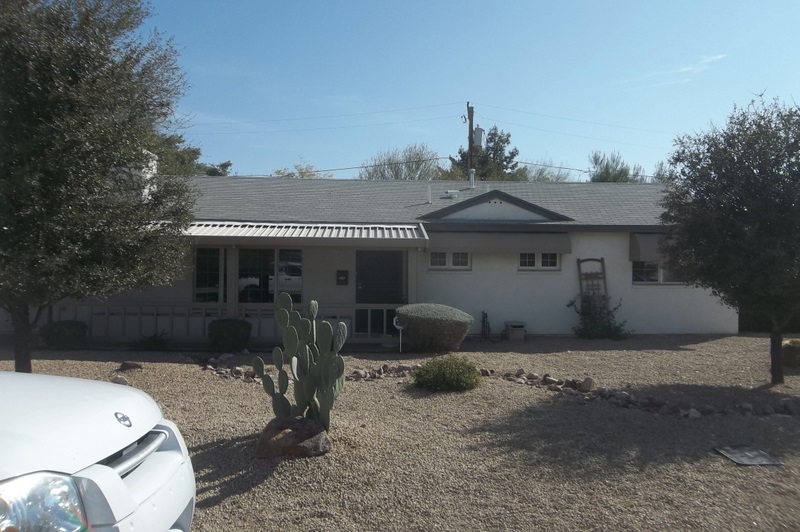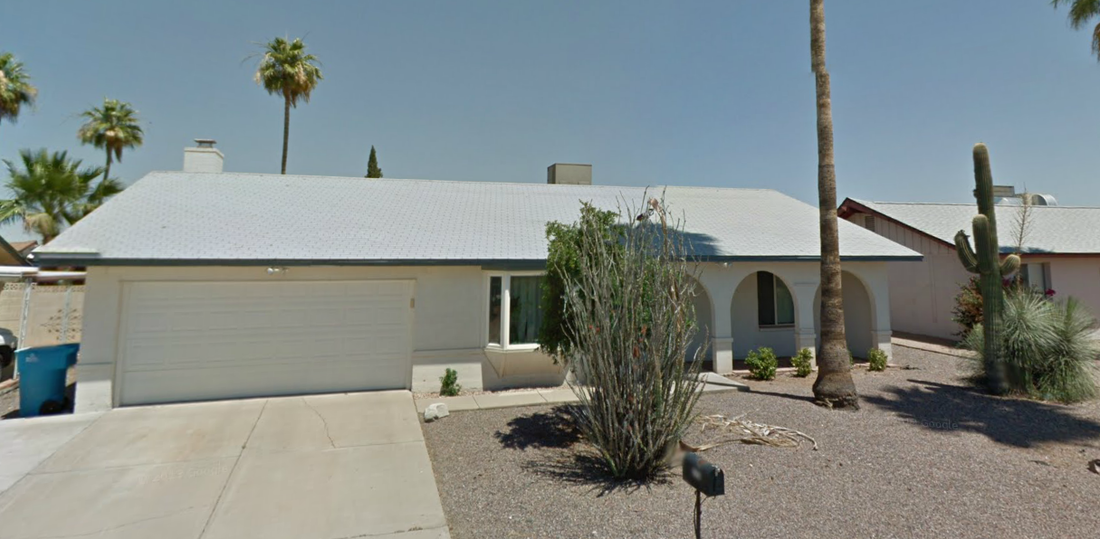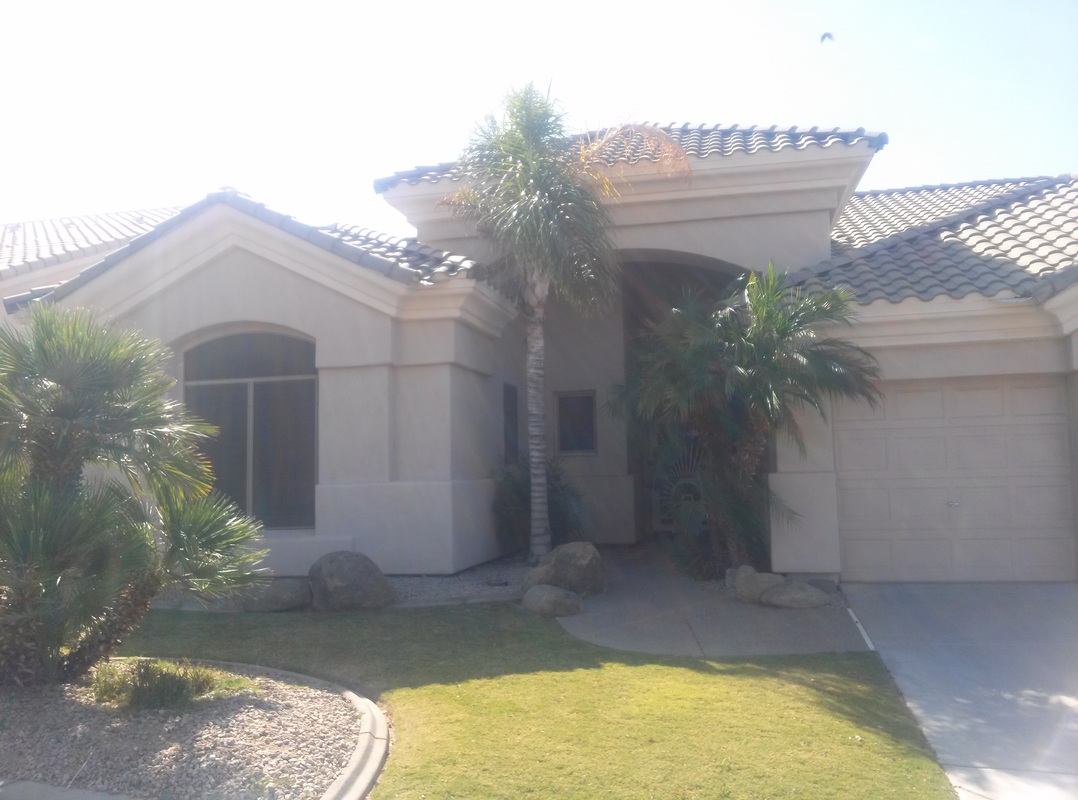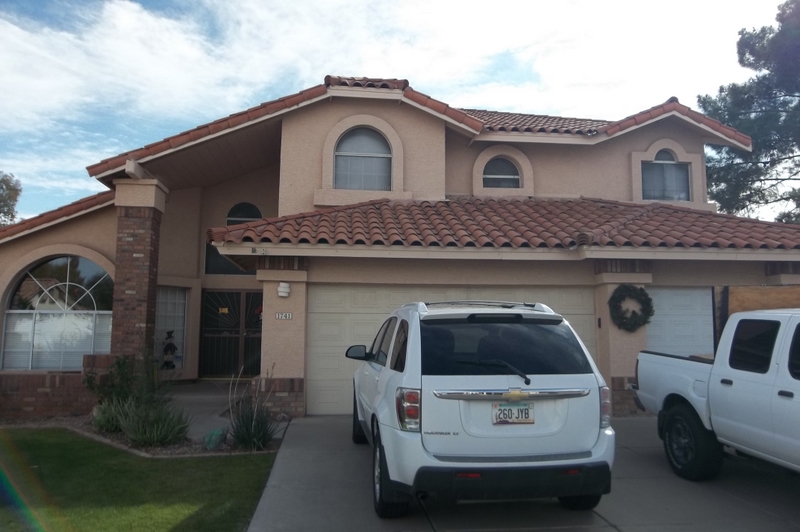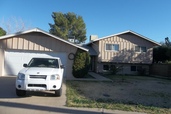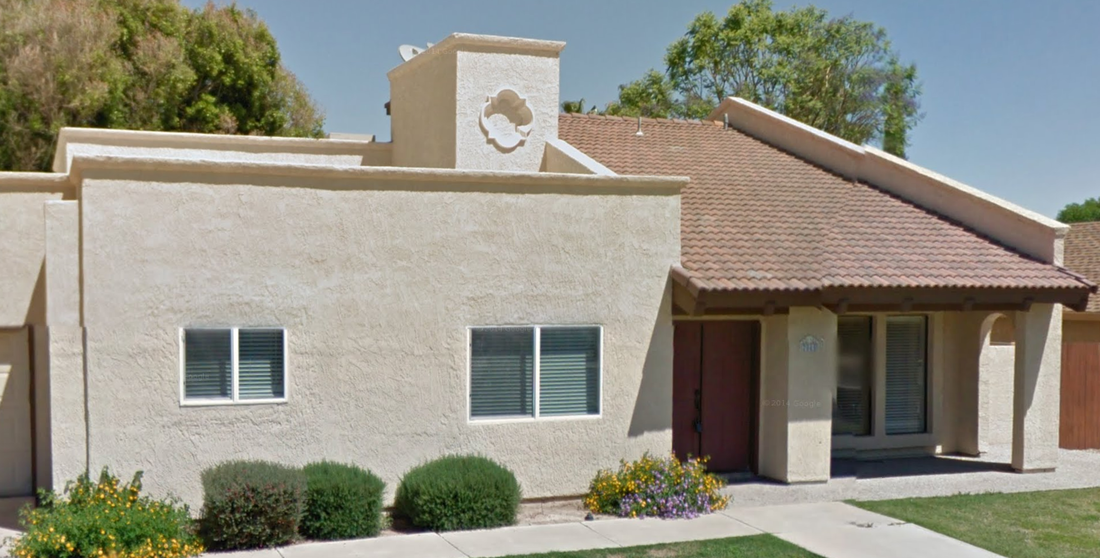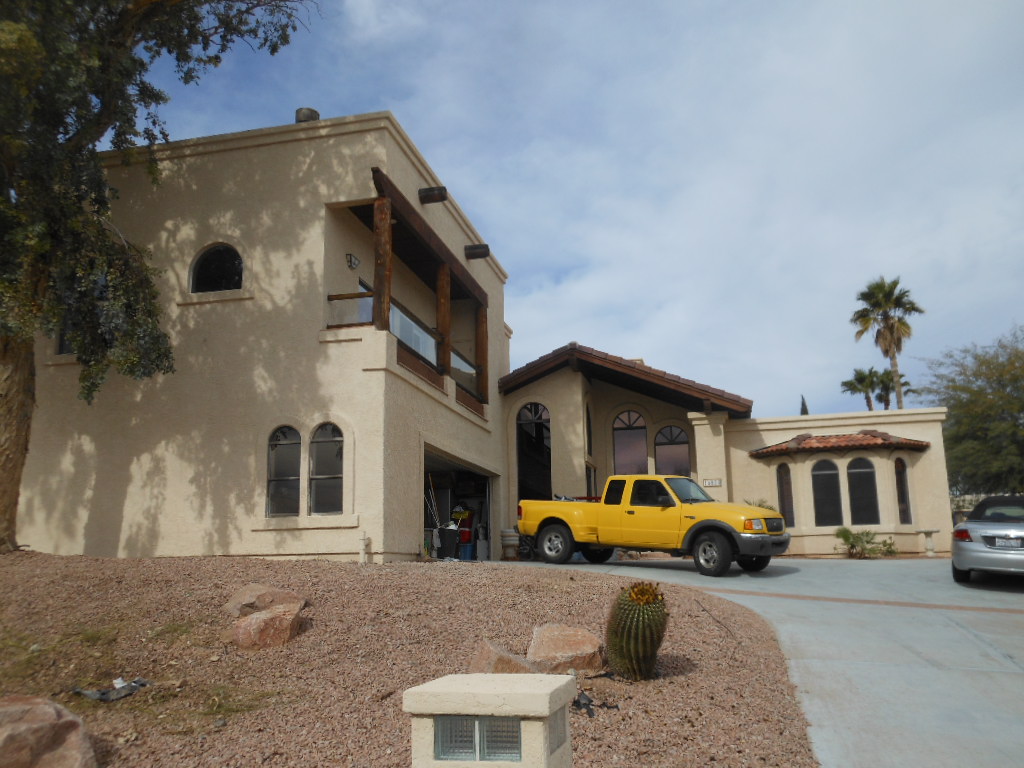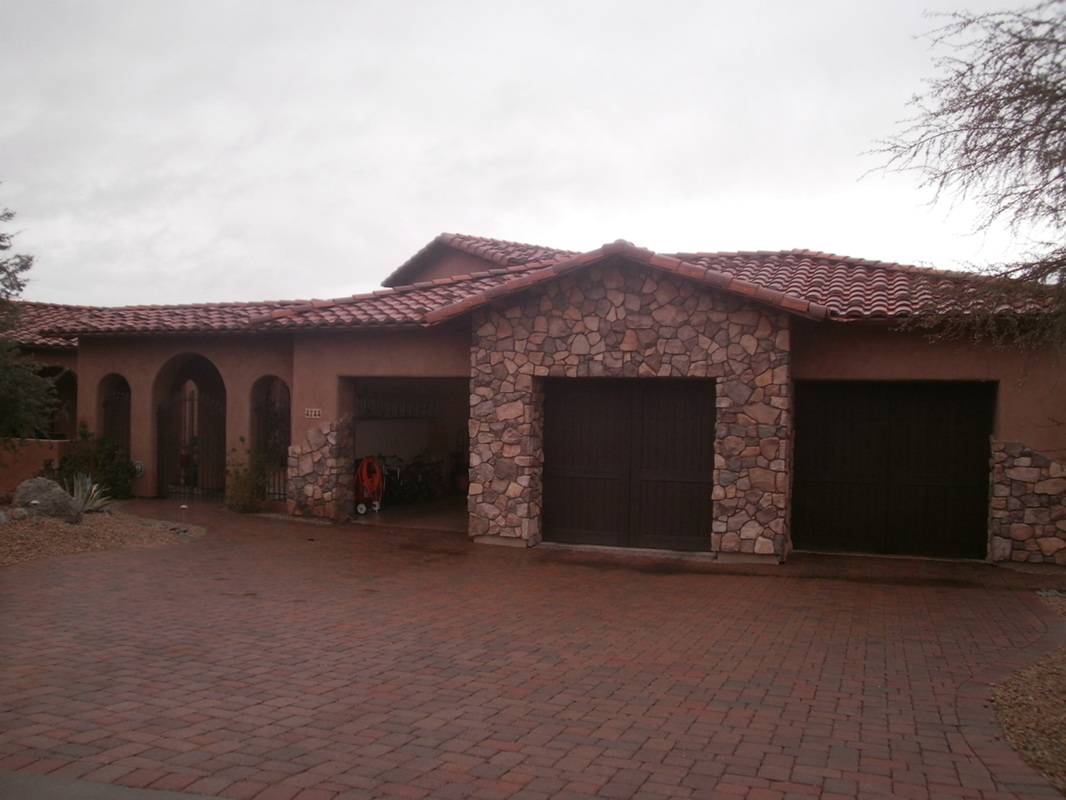|
Air that leaks through your home’s envelope – the outer walls, windows, doors, and other openings – wastes a lot of energy and increases your energy costs. A well-sealed envelope, coupled with the right amount of insulation, can make a real difference on your utility bills. Reducing the amount of air that leaks in and out of your home is a cost-effective way to cut heating and cooling costs, improve durability, increase comfort, and create a healthier indoor environment. Caulking and weatherstripping are two simple and effective air-sealing techniques that offer quick returns on investment, often one year or less. Caulk is generally used for cracks and openings between stationary house components such as around door and window frames, and weatherstripping is used to seal components that move, such as doors and operable windows. What is Air Leakage? Air leakage occurs when outside air enters and conditioned air leaves your house uncontrollably through cracks and openings. It is unwise to rely on air leakage for ventilation. During cold or windy weather, too much air may enter the house. When it is warmer and less windy, not enough air may enter, which can result in poor indoor air quality. Air leakage also contributes to moisture problems that can affect the health of the occupants and the durability of the structure. An added benefit is that sealing cracks and openings reduces drafts and cold spots, improving comfort. The recommended strategy is to reduce air leakage as much as possible and to provide controlled ventilation as needed. Before air sealing, you should first detect air leaks and assess your ventilation needs for indoor air quality. You can then apply air sealing techniques and materials, including caulk and weatherstripping. If you are planning an extensive remodel of you home that will include some construction, review some of the techniques used for air sealing in new home construction and consider a home energy audit to identify the ways that your home wastes energy and money. Why seal and insulate? Sealing leaks and adding insulation can improve the overall comfort of your home and help to fix many of these common problems:
Know your ducts In houses with forced-air heating and cooling systems, ducts are used to distribute conditioned air throughout the house. But in the typical home, about 20% of the air that moves through the duct system is lost due to leaks, holes, and poorly connected ducts. The result is higher energy bills and difficulty keeping the house comfortable, no matter how the thermostat is set. Some signs that your home may have leaky, poorly insulated, or inefficient ducts:
Benefits of air sealing A duct system that is well-designed and properly sealed can make your home more comfortable, safer, and more energy efficient. Comfort Sealing and insulating ducts can help with common comfort problems, such as rooms that are too hot in the summer of too cold in the winter. Indoor Air Quality Fumes from household and garden chemicals, insulation particles, and dust can enter your duct system, aggravating asthma and allergy problems. Sealing ducts can help improve indoor air quality by reducing the risk of pollutants entering ducts and circulating through your home. Safety During normal operation, gas appliances such as water heaters, clothes dryers, and furnaces release combustion gases (like carbon monoxide) through their ventilation systems. Leaky ductwork in your heating and cooling system may cause “backdrafting,” where these gases are drawn back into the living space, rather than expelled to the outdoors. Sealing leaks can minimize this risk. Save money! Leaky ducts can reduce heating and cooling system efficiency by as much as 20 percent. Sealing and insulating ducts increases efficiency, lowers your energy bills, and can often pay for itself in energy savings. Plus, if you’re planning to install new heating and cooling equipment, a well-designed and sealed duct system may allow you to downsize to a smaller, less costly heating and cooling system that will provide better dehumidification. Many times, a home upgrade like air sealing your home qualifies you for rebates from your local utility company, as well as federal tax credits! Protect the environment Energy used in our homes often comes from the burning of fossil fuels at power plants, which contributes to smog, acid rain, and climate change. Simply put, the less energy we use in our homes, the less air pollution we generate. By sealing your ducts and reducing the amount of energy necessary to comfortably heat or cool your home, you can reduce the amount of air pollution generated. 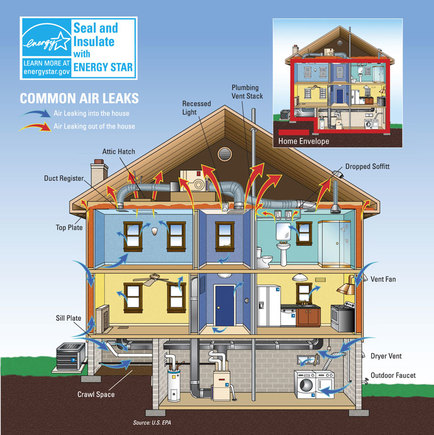 Having your home properly air sealed is critical to your energy conservation efforts and greatly impacts your utility bills. You can save big on your energy costs by air sealing multiple points of your home where energy losses occur. Fixing these problems also improves your comfort, eliminates moisture problems, and improves the air quality within your home. A professional home energy audit by a certified contractor, such as Green ID, is the best way to evaluate your energy consumption, providing you with a comprehensive assessment of your home’s energy performance. This energy audit performed by a professional energy auditor using diagnostic equipment will provide you with detailed information and a plan of action for how to improve your home, cut down energy consumption, and save money. If you think that your home needs to be air sealed, call Green ID today at (602) 926-1650 for more information or to schedule your home energy audit and start saving!
1 Comment
12/9/2020 07:54:34 am
Energy efficiency is one of the easiest and most cost-effective ways to combat climate change, clean the air we breathe, improve the competitiveness of our businesses and reduce energy costs for consumers.
Reply
Your comment will be posted after it is approved.
Leave a Reply. |
Sign Up For Your Home Energy AuditFIND YOUR HOME TYPERanch HomesSingle Story, Spec HomesTwo Story, Spec HomesTri-Level HomesPre-1990 Custom HomePost-1990 Custom HomeDon't See Your Home? Find Your City Below!Archives
April 2024
Copyright Notice©2009 – 2023
All Rights Reserved |


